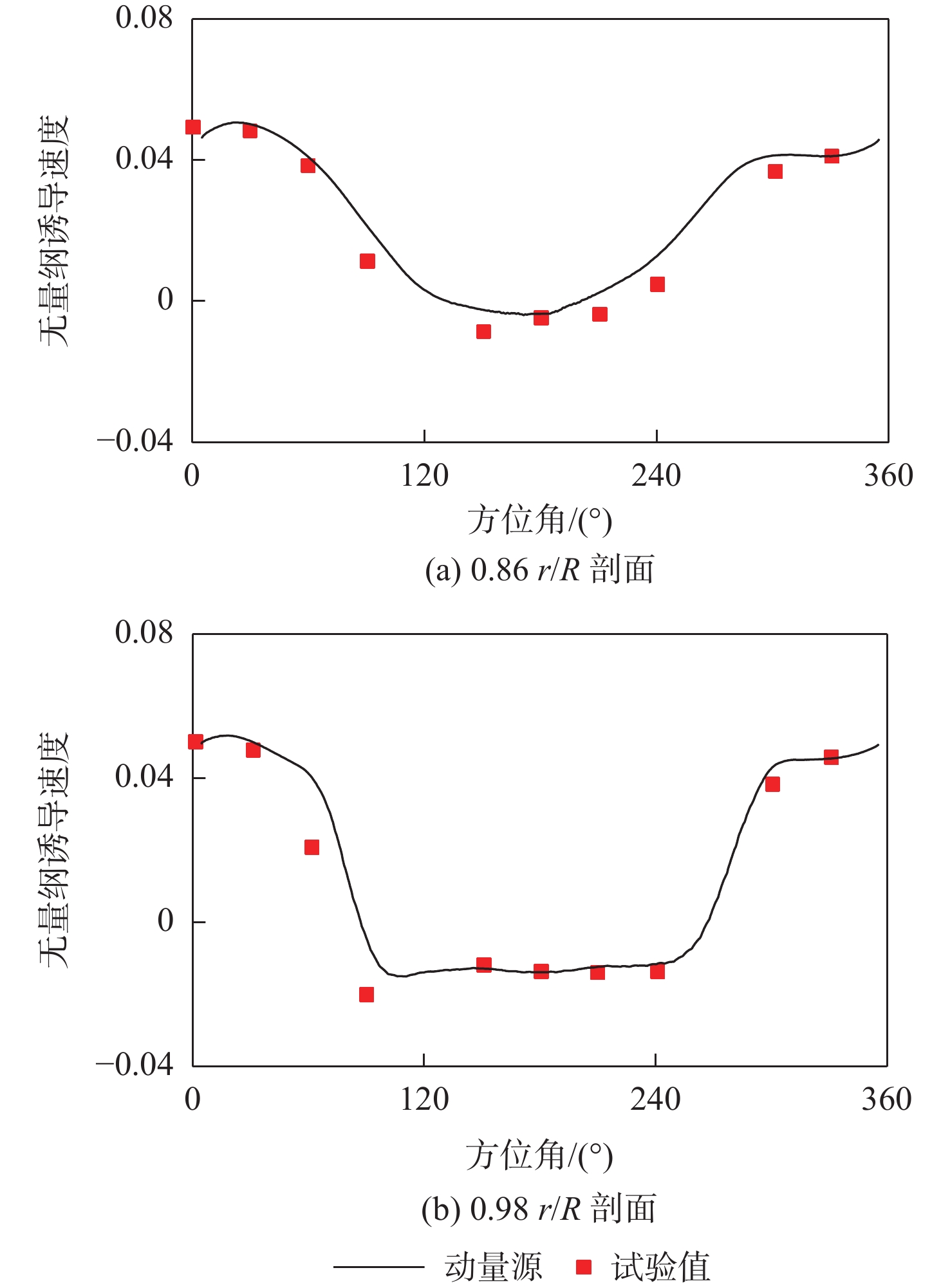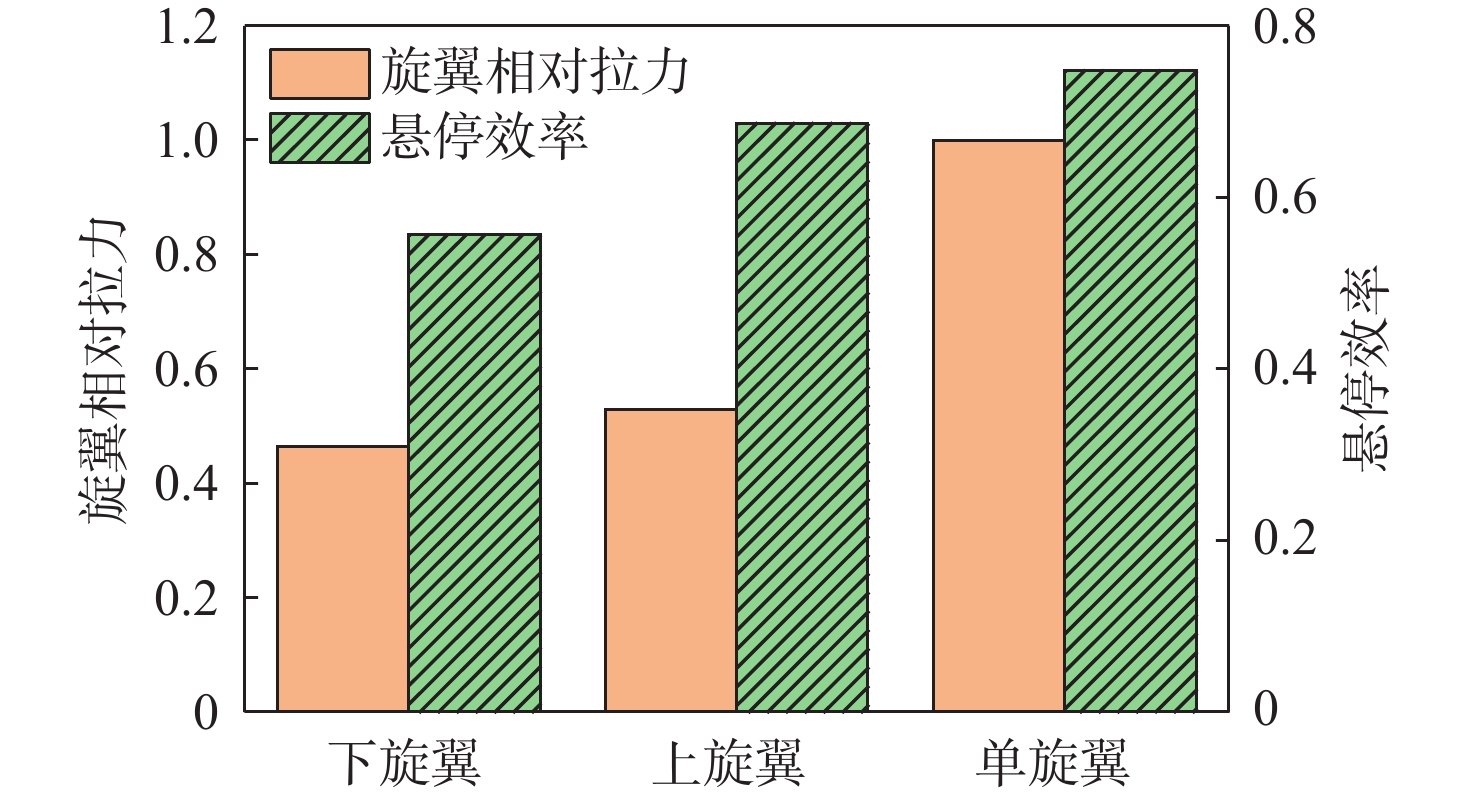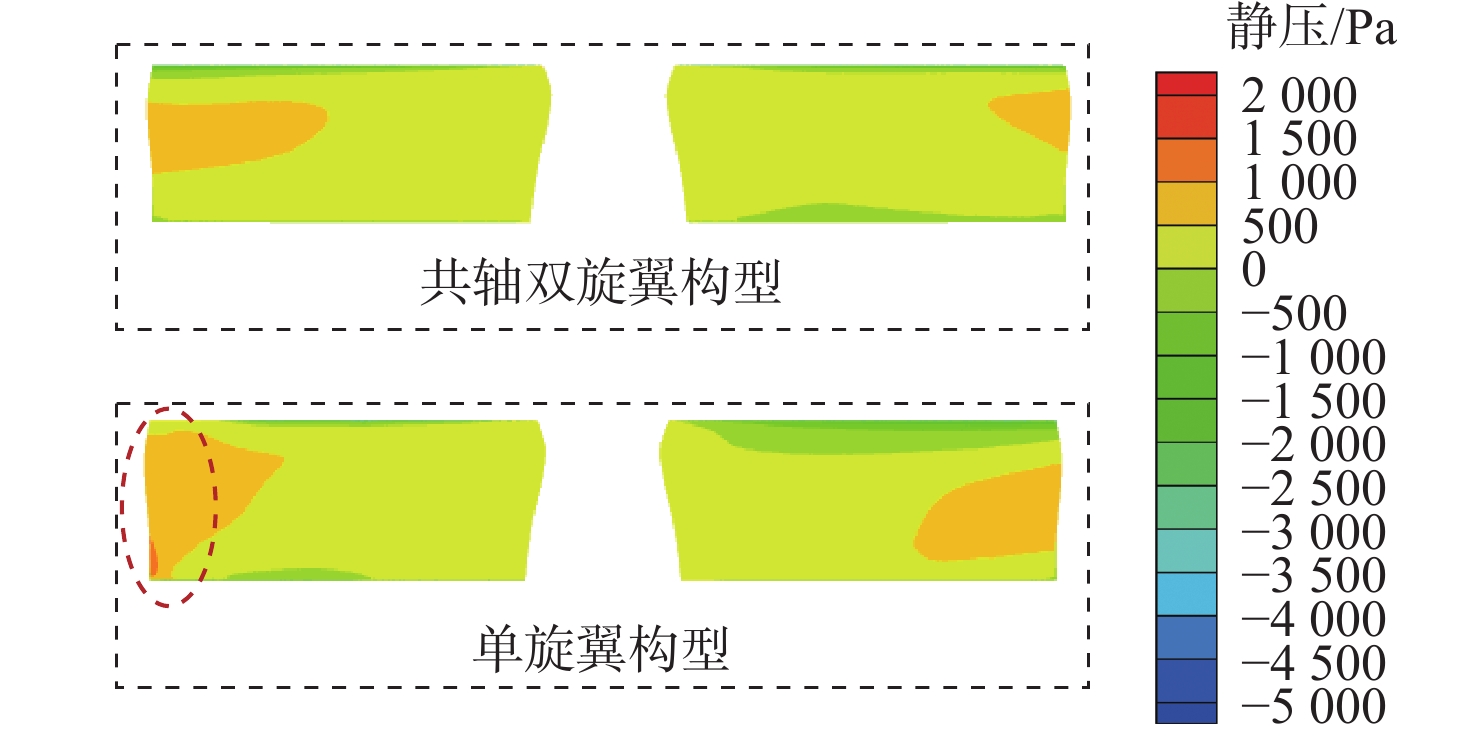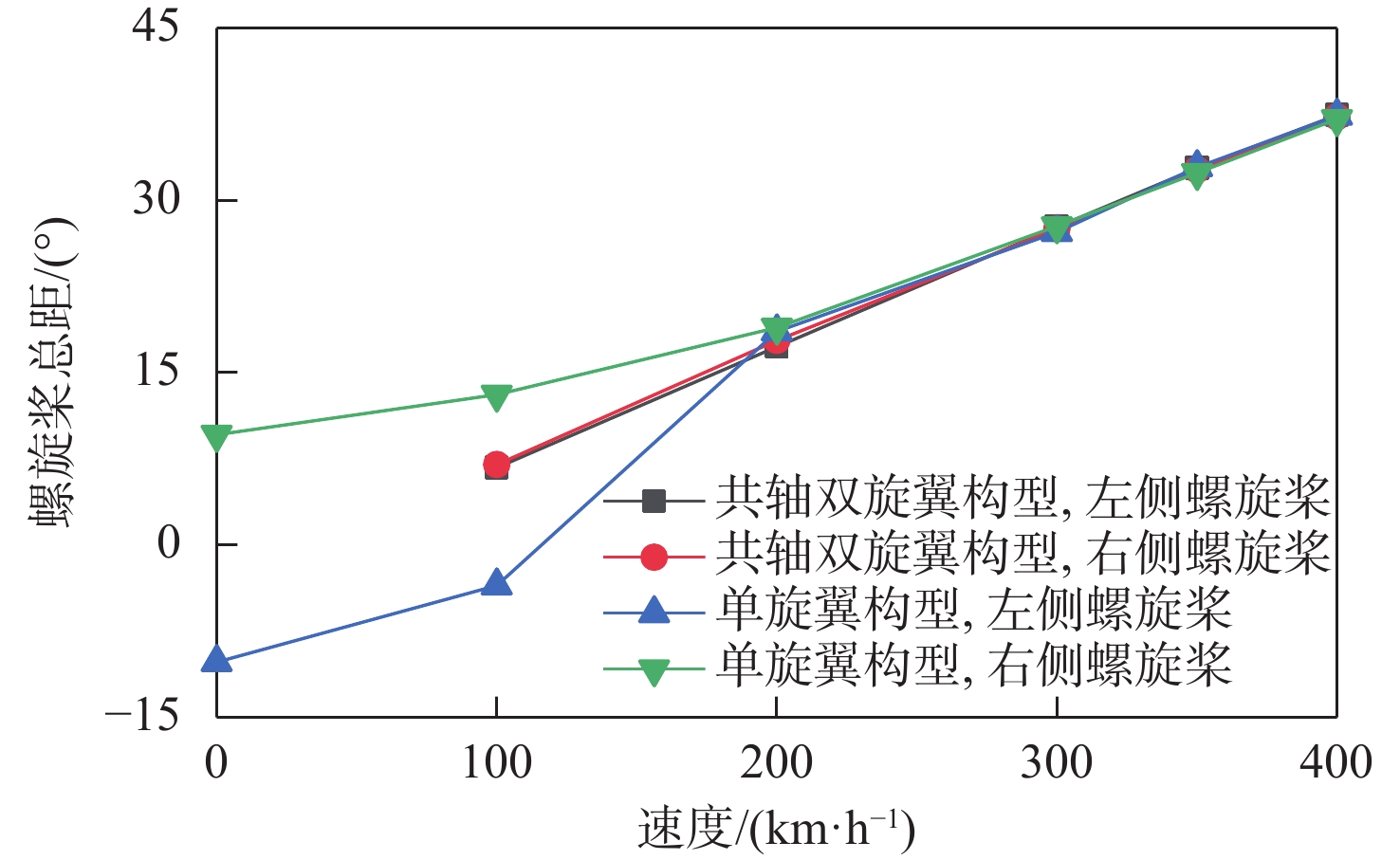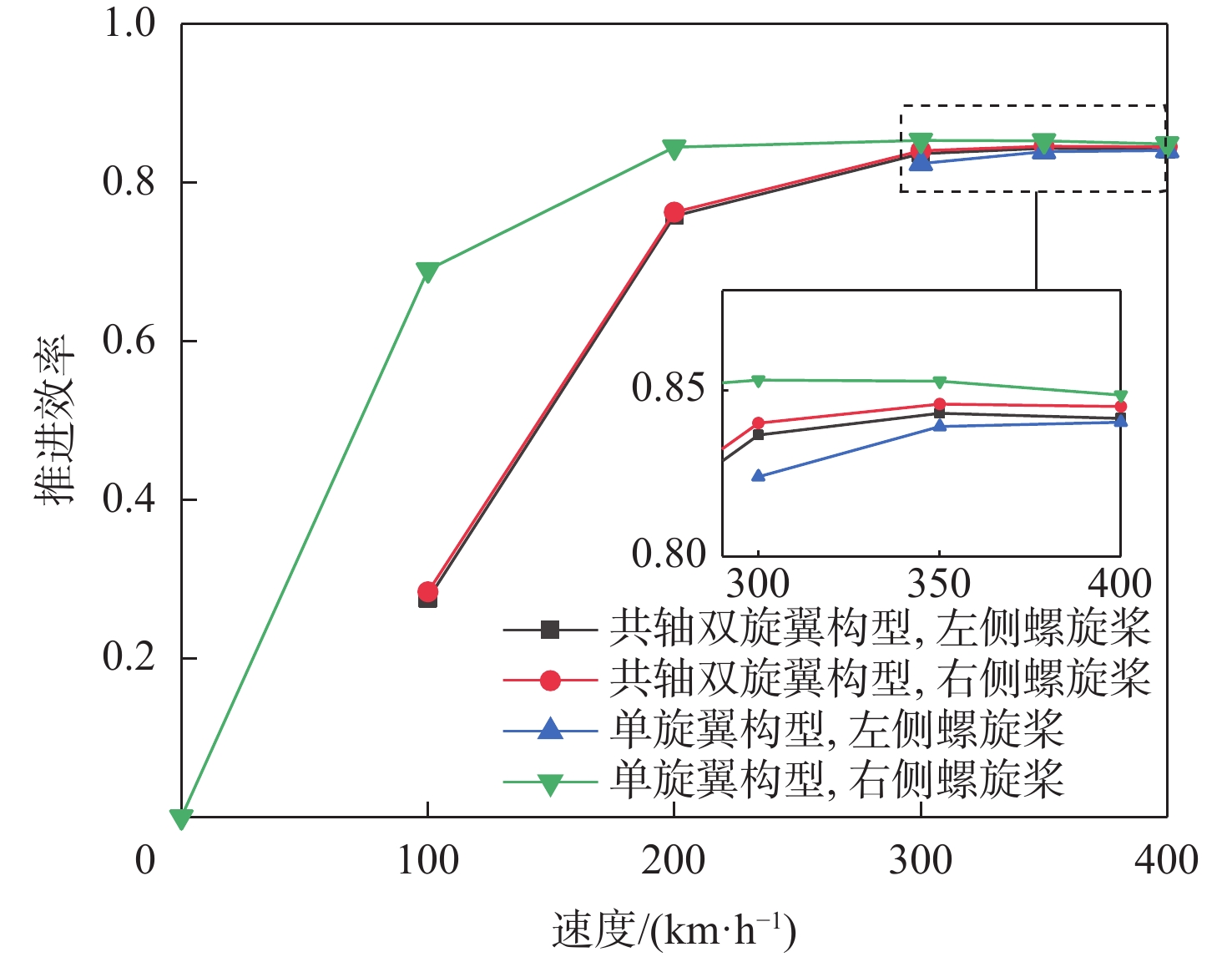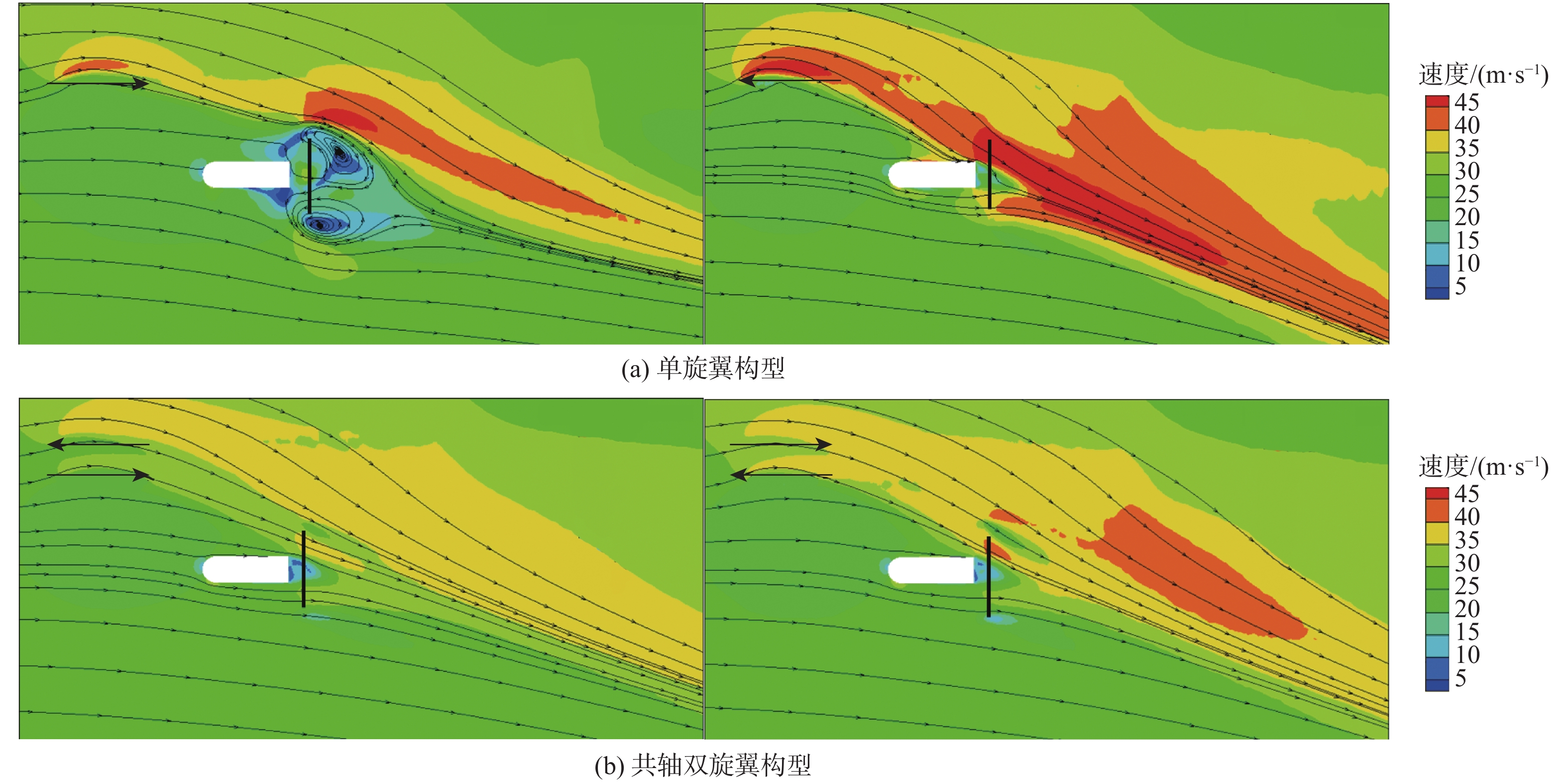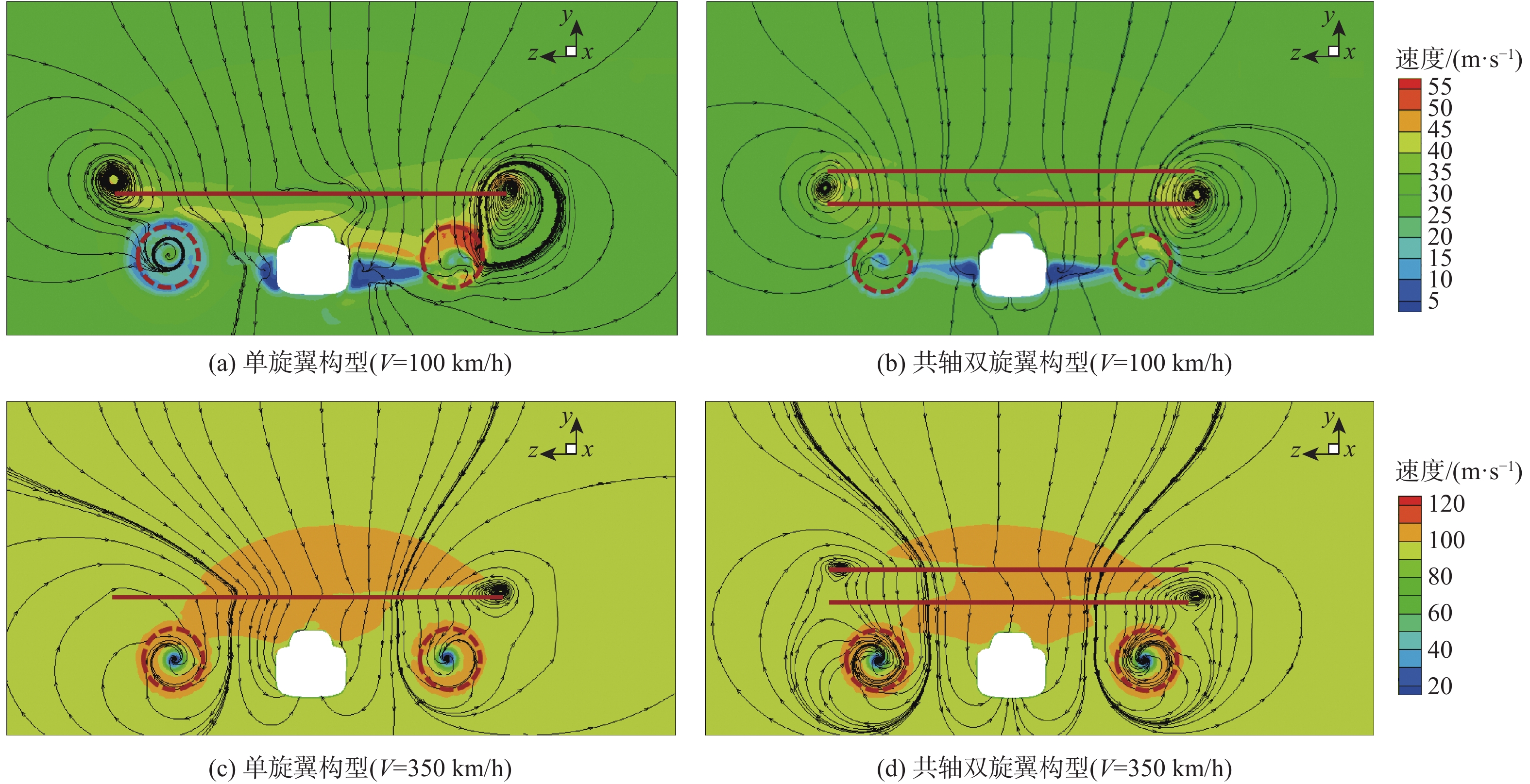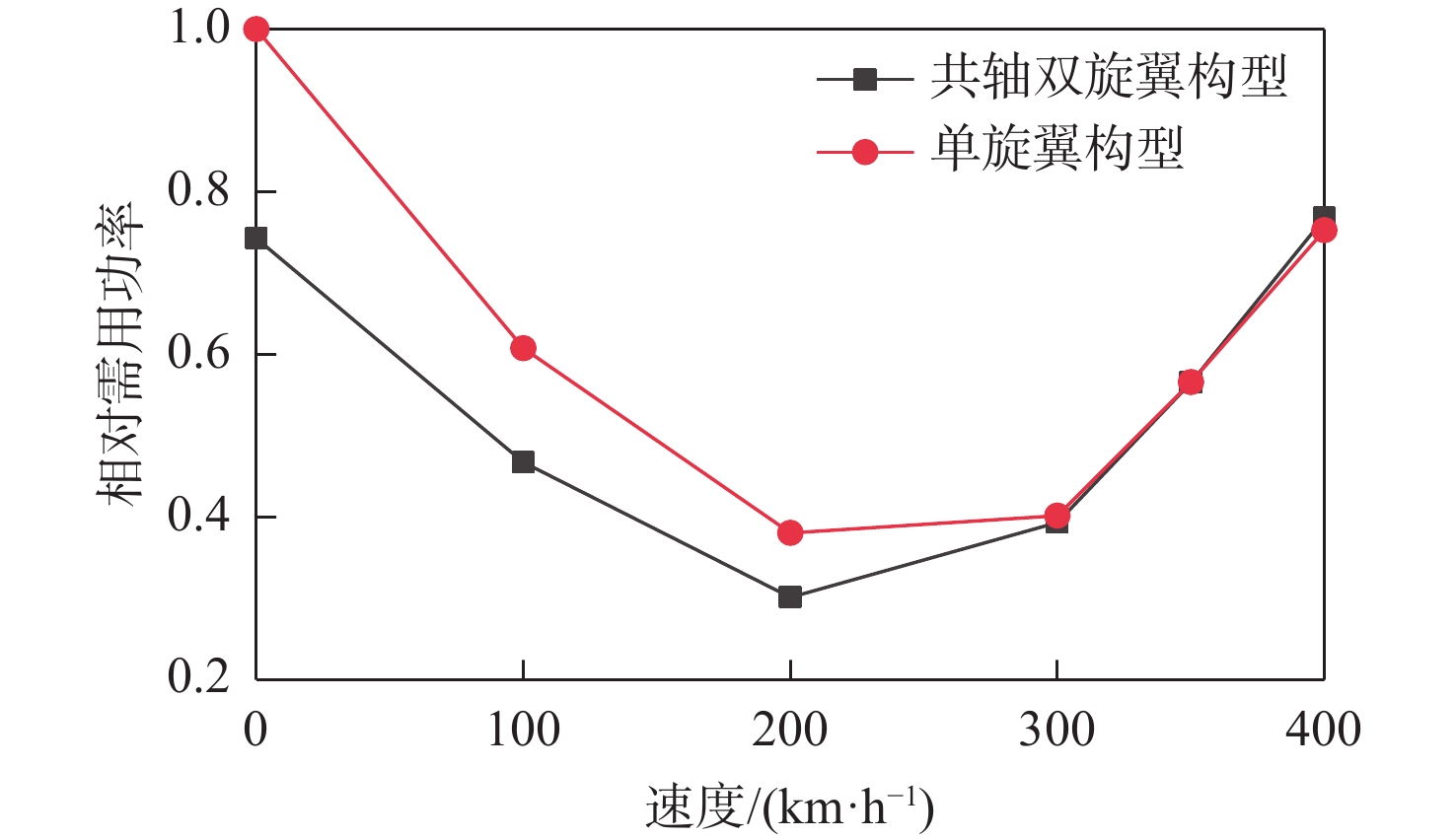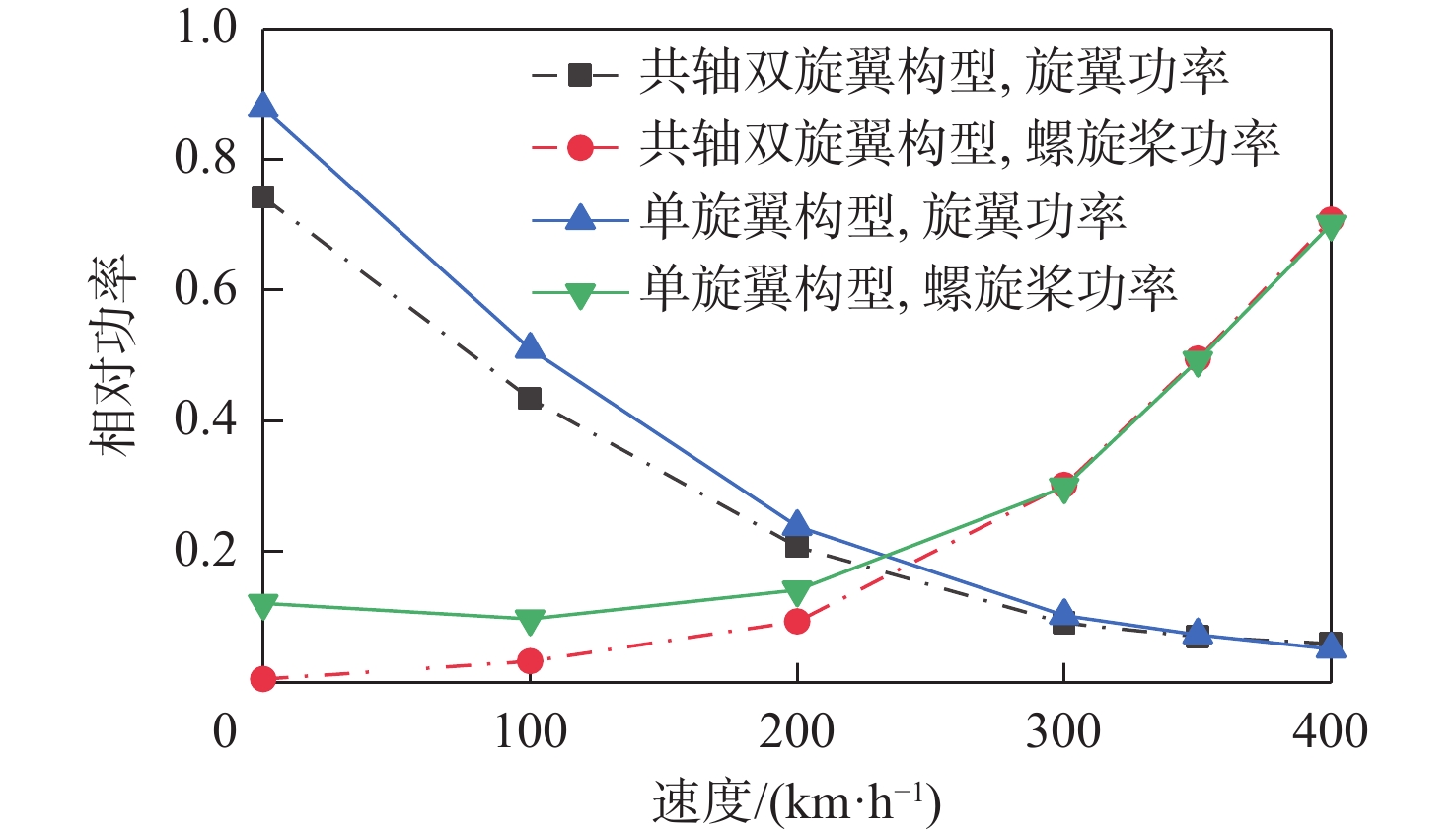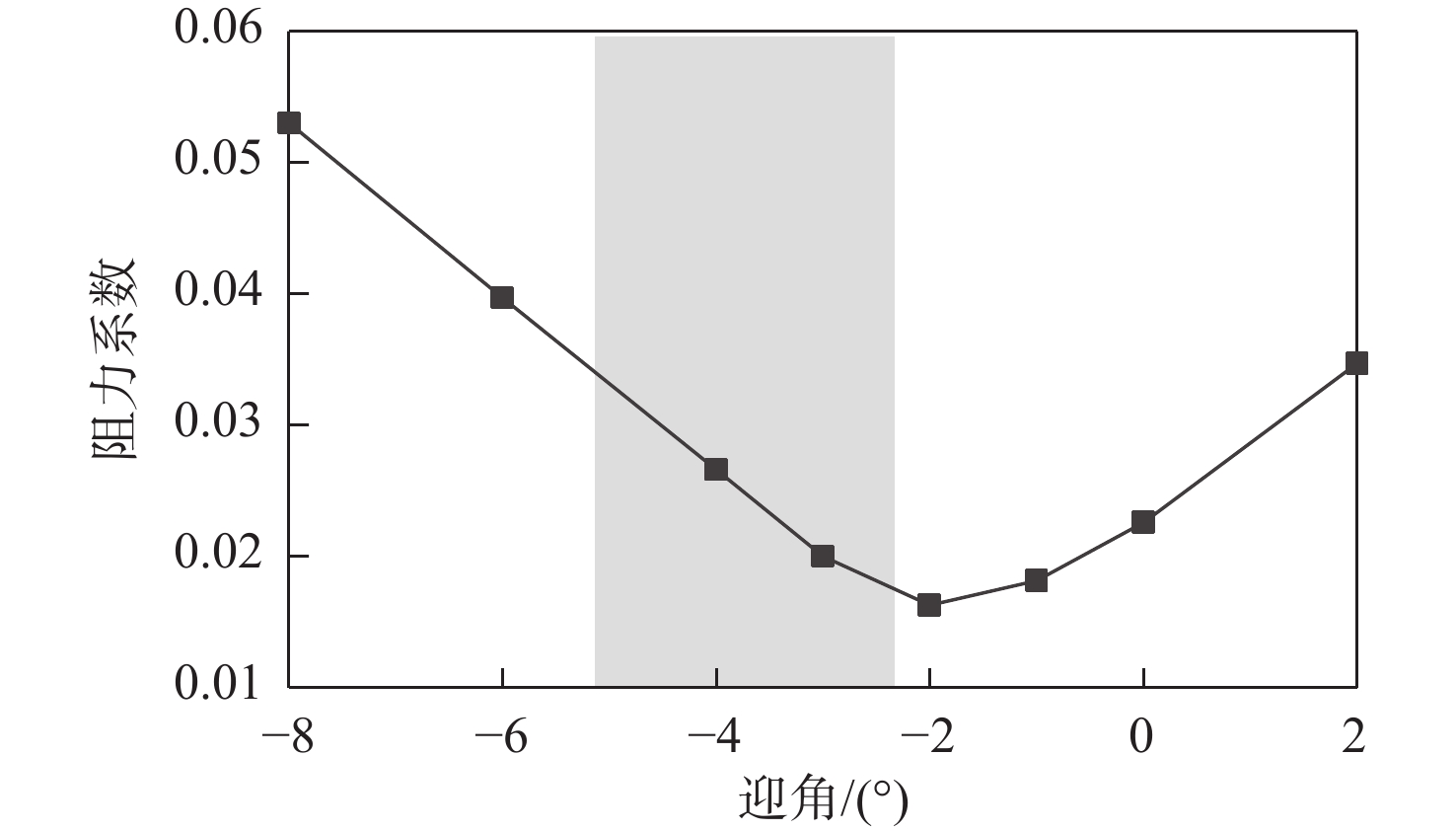Aerodynamic interference characteristics of a new compound configuration helicopter
-
摘要:
综合共轴双旋翼直升机高悬停效率和操纵效率的特点及双推力螺旋桨复合式直升机高速前飞性能的优势,将共轴双旋翼应用到双推力螺旋桨复合式直升机上。以X3复合式直升机为基准,将单旋翼改为共轴双旋翼。为研究共轴双旋翼对复合式直升机气动特性的影响,建立全机快速配平方法,并在此基础上针对不同构型直升机开展气动特性分析。结果表明:相较于单旋翼构型,共轴双旋翼构型直升机空气动力学特性具有良好的对称性;在保持较好的高速前飞性能的情况下,共轴双旋翼复合构型可以显著提升悬停和低速飞行性能,悬停效率提升6.8%,100 km/h前飞速度下总需用功率降低23.1%;低速状态下共轴双旋翼对螺旋桨的气动干扰程度明显低于单旋翼构型。
Abstract:By combining the characteristics of high hovering performance and control efficiency of coaxial-rotor helicopters and the advantage of high-speed forward flight performance of double-thrust-propeller compound configuration helicopters, the coaxial rotor was applied to the double-thrust-propeller compound configuration helicopter. The single rotor was changed to a coaxial rotor based on the configuration of the X3 compound helicopter. To study the influence of coaxial rotors on the aerodynamic characteristics of compound configuration helicopters, a fast trim method was established. On this basis, the aerodynamic characteristics of different configuration helicopters were analyzed. The results indicate that the aerodynamic characteristics of the coaxial-rotor helicopter have good symmetry compared with the single-rotor configuration. In the case of maintaining good high-speed forward flight performance, the coaxial-rotor configuration can significantly improve the hovering and low-speed flight performance. When the hovering efficiency is increased by 6.8%, and the forward flight speed is 100 km/h, the total required power is reduced by 23.1%. The aerodynamic interference of the coaxial rotor to the propeller at low speeds is greatly lower than that of the single rotor.
-
半径R/m 转速/(rad·s−1) 桨叶片数 桨叶根切/m 弦长/m 翼型 6.3 36.55 5 1.512 0.385 NACA6412 表 2 共轴双旋翼构型
Table 2. Coaxial-rotor configuration
旋翼参数 半径R/m 转速/(rad·s−1) 桨叶片数 上下旋翼间距H/R 旋翼参数 桨叶根切/m 弦长/m 翼型 数值 6.3 36.55 3+3 0.16 数值 1.512 0.321 NACA6412 -
[1] EDI P, YUSOFF N, YAZID A A, et al. New design concept of compound helicopter[C]// Proceedings of the 4th WSEAS International Conference on APPLIED and THEORETICAL MECHANICS. Athens: WSEAS Press, 2008: 101-105. [2] ORCHARD M, NEWMAN S. The fundamental configuration and design of the compound helicopter[J]. Journal of Aerospace Engineering, 2003, 217(6): 297-315. [3] 赵寅宇, 黎鑫, 史勇杰, 等. 双拉力螺旋桨构型复合式高速直升机旋翼/螺旋桨干扰流场分析[J]. 南京航空航天大学学报, 2017, 49(2): 154-164.ZHAO Y Y, LI X, SHI Y J, et al. Analysis of rotor/propeller interference flow field of double-pull propeller configuration composite high-speed helicopter[J]. Journal of Nanjing University of Aeronautics & Astronautics, 2017, 49(2): 154-164(in Chinese). [4] FERGUSON K, THOMSON D. F1ight dynamics investigation of compound helicopter configurations[J]. Journal of Aircraft, 2015, 52(1): 1-12. doi: 10.2514/1.C033321 [5] BLACKWELL R, MILLOTT T. Dynamics design characteristics of the Sikorsky X2 technologyTM demonstrator aircraft: 64-2008-000174[R]. Montreal: The American Helicopter Society, 2008: 1-13. [6] 于琦. 美军下一代直升机的需求与竞争[J]. 兵器知识, 2020(12): 51-55.YU Q. Demand and competition of American next generation helicopter[J]. Ordnance Knowledge, 2020(12): 51-55(in Chinese). [7] 朱振华, 朱清华, 申遂愿. 一种涵道螺旋桨推力共轴双旋翼直升机: CN109665096A[P]. 2019-04-23.ZHU Z H, ZHU Q H, SHEN S Y. A coaxial twin rotor helicopter with ducted thrust propeller: CN109665096A[P]. 2019-04-23(in Chinese). [8] BAGAI A. Aerodynamic design of the X2 technology demonstratorTM main rotor blade: 64-2008-000227[R]. Montreal: The American Helicopter Society, 2008: 1-16. [9] KENYON A R, BROWN R E, DURAISAMY K. Interactional aerodynamics and acoustics of a hingeless coaxial helicopter with an auxiliary propeller in forward flight[J]. Aeronautical Journal, 2009, 113(1140): 65-78. doi: 10.1017/S0001924000002797 [10] XU H Y, YE Z Y. Numerical simulation of unsteady flow around forward flight helicopter with coaxial rotors[J]. Chinese Journal of Aeronautics, 2011, 24(1): 1-7. doi: 10.1016/S1000-9361(11)60001-0 [11] 李文浩. 复合式高速直升机旋翼/机身气动干扰特性的CFD分析[D]. 南京: 南京航空航天大学, 2012.LI W H. CFD analysis of rotor/fuselage aerodynamic interference characteristics of compound high speed helicopter[D]. Nanjing: Nanjing University of Aeronautics and Astronautics, 2012(in Chinese). [12] 张银. 复合式共轴刚性旋翼直升机气动干扰及飞行特性分析[D]. 南京: 南京航空航天大学, 2014.ZHANG Y. Aerodynamic interference and flight characteristics analysis of compound coaxial rigid rotor helicopter[D]. Nanjing: Nanjing University of Aeronautics and Astronautics, 2014(in Chinese). [13] 吴裕平, 习娟, 范俊. 共轴刚性旋翼高速直升机配平及旋翼系统气动特性研究[J]. 直升机技术, 2018, 2(1): 1-7. doi: 10.3969/j.issn.1673-1220.2018.01.001WU Y P, XI J, FAN J. Research on balancing and rotor system aerodynamic characteristics of coaxial rigid rotor high speed helicopter[J]. Journal of Helicopter Technology, 2018, 2(1): 1-7 (in Chinese). doi: 10.3969/j.issn.1673-1220.2018.01.001 [14] 段赛玉, 陈铭. 复合式共轴直升机飞行动力学数学模型研究[J]. 飞机设计, 2011, 31(3): 1-6. doi: 10.3969/j.issn.1673-4599.2011.03.001DUAN S Y, CHEN M. Research on flight dynamics mathematical model of compound coaxial helicopter[J]. Aircraft Design, 2011, 31(3): 1-6(in Chinese). doi: 10.3969/j.issn.1673-4599.2011.03.001 [15] 王倩楠. 复合推力高速直升机气动干扰特性分析[D]. 南京: 南京航空航天大学, 2021.WANG Q N. Analysis of aerodynamic interference characteristics of compound thrust high-speed helicopter[D]. Nanjing: Nanjing University of Aeronautics and Astronautics, 2021(in Chinese). [16] BLAZEK J. Computational fluid dynamics: Principles and applications, second edition[M]. Amsterdam: Elsevier, 2005: 16-18. [17] RAJAGOPALAN R G, LIM C K. Laminar flow analysis of a rotor in hover[J]. Journal of the American Helicopter Society, 1991, 36(1): 12-23. doi: 10.4050/JAHS.36.1.12 [18] RAJAGOPALAN R G, MATHUR S R. Three dimensional analysis of a rotor in forward flight[J]. Journal of the American Helicopter Society, 1993, 38(3): 14-25. doi: 10.4050/JAHS.38.14 [19] RAJAGOPALAN R G, BERG D E, KLIMAS P C. Development of a three-dimensional model for the Darrieus rotor and its wake[J]. Journal of Propulsion and Power, 1995, 11(2): 185-195. doi: 10.2514/3.51410 [20] RAJAGOPALAN R G. A procedure for rotor performance, flow-field and interference——A perspective[C]//Proceedings of the 38th Aerospace Sciences Meeting and Exhibit. Reston: AIAA, 2000. [21] MCKEE J W, NAESETH R L. Experimental investigation of the drag of flat plates and cylinders in the slipstream of a hovering rotor: NASA-TN-4239[R]. Washington, D. C. : NASA, 1958: 1-43. [22] JOE W E, SUSAN L A, RICHARD H S. Inflow measurement made with a laser velocimeter on a helicopter model in forward flight. Volume 1: Rectangular planform blades at an advance ratio of 0.15: NASA-TM-100541 [R]. Washington, D. C. : NASA, 1998: 1-323. [23] FREEMAN C E, MINECK R E. Fuselage measurements of a helicopter wind-tunnel model with a 3.15-meter diameter single rotor: NASA-TM-80051[R]. Washington, D. C. : NASA, 1979: 1-170. [24] LEISHMAN J G, SYAL M. Figure of merit definition for coaxial rotors[J]. Journal of the American Helicopter Society, 2008, 53(3): 290-300. doi: 10.4050/JAHS.53.290 [25] LEISHMAN J G. Principles of helicopter aerodynamics[M]. Cambridge: Cambridge University Press, 2006: 304-313. [26] TOROPOV M Y, STEPANOV S Y. Modeling of helicopter flight imitation in the vortex ring state[J]. Russian Aeronautics, 2016, 59(4): 517-522. doi: 10.3103/S1068799816040127 [27] 王涌钦, 余新, 陈仁良, 等. 双螺旋桨推进复合式直升机操纵分配与最优过渡路线设计[J]. 南京航空航天大学学报, 2022, 54(2): 211-218.WANG Y Q, YU X, CHEN R L, et al. Redundant control and optimal transition route design of compound helicopter[J]. Journal of Nanjing University of Aeronautics & Astronautics, 2022, 54(2): 211-218(in Chinese). -







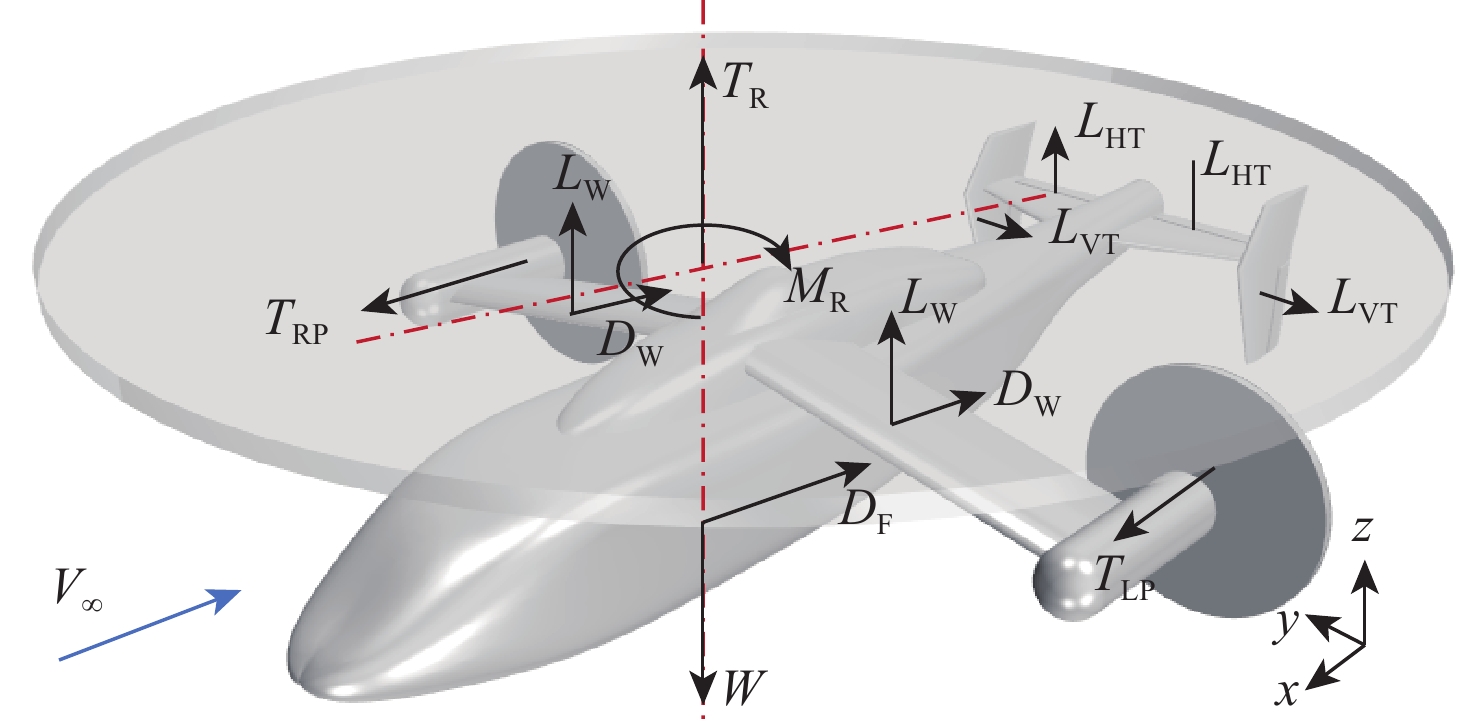
 下载:
下载:




